A couple of weeks ago, I went to the press view of the 23rd Triennale Milano International Exhibition. The event features various exhibitions as well as a series of national pavilions. The Democratic Republic of Congo and Austria were among my favourite but the pavilion which ambition, cleverness and coherence left a mark on me was the pavilion of The Netherlands.
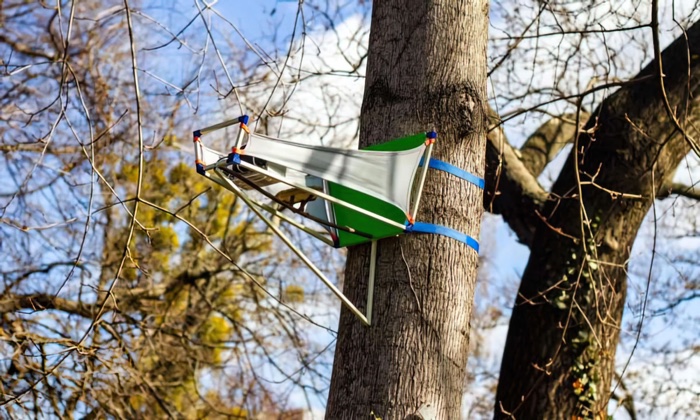
Design Investigations students at the University of Applied Arts, Vienna: Takuma Kikuchi, Lucy Li, Florian Sapp and Alan Schiegl, Interspecies Play, 2022
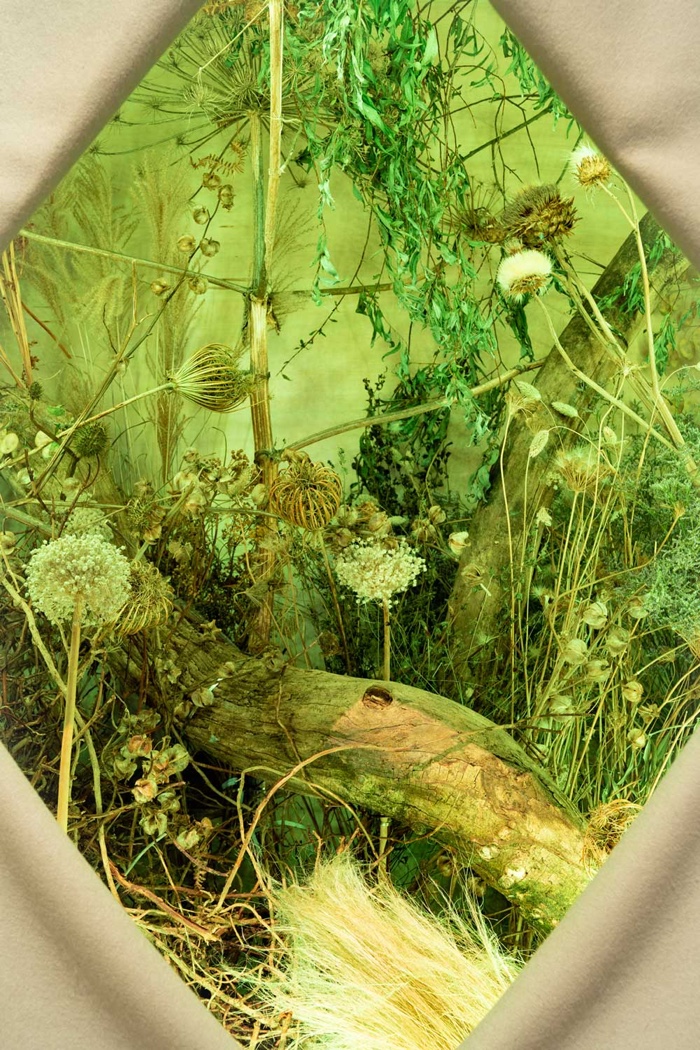
Joost Emmerik, Botanical Bath, 2022. Have we met? Humans and Non-humans on Common Ground at La Triennale di Milano 2022. Photo: Cristiano Corte
Curated by Het Nieuwe Instituut under the title Have we met? Humans and non-humans on common ground, the show is an uplifting meditation on the urgency to welcome the perspectives of non-human life into our vision of the world. Have we met? questions our anthropocentric understanding of a planet that exists solely for human exploitation. One of the most damaging consequences of this shortsightedness is our failure to face environmental crises in a comprehensive and meaningful way.
The idea of a planet shared fairly between all living species is not a new one, not even in the West. What is original however is the collection of credible, collaborative tools and proposals that attempt to recalibrate the relationship between plants, fungi, microbes, humans and other animals. Instead of the usual techno-solutionism and pompous “design will save the world” mindset, the attitudes, tools and technologies selected for Have we met? explore realistic possibilities for interspecies relationships. These projects also reflect the Zoöp model which commits to making the interests of non-humans part of its organisational decision-making. In this model, the voices and interests of non-human life are represented by a “Speaker for the Living” who acts as observer, advisor and teacher in the organisation.
Have we met? Humans and non-humans on common ground features a dozen projects. I was particularly drawn to the ones that looked at the offshore energy industry in the North Sea.
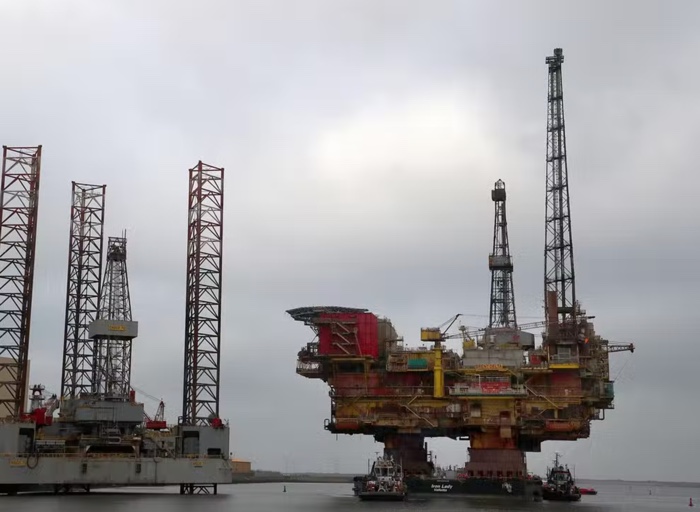
An offshore oil drilling rig platform is towed by tug boats up the River Tees to Able Seaton Port for decommissioning in England. Photo: Getty, via The Independent
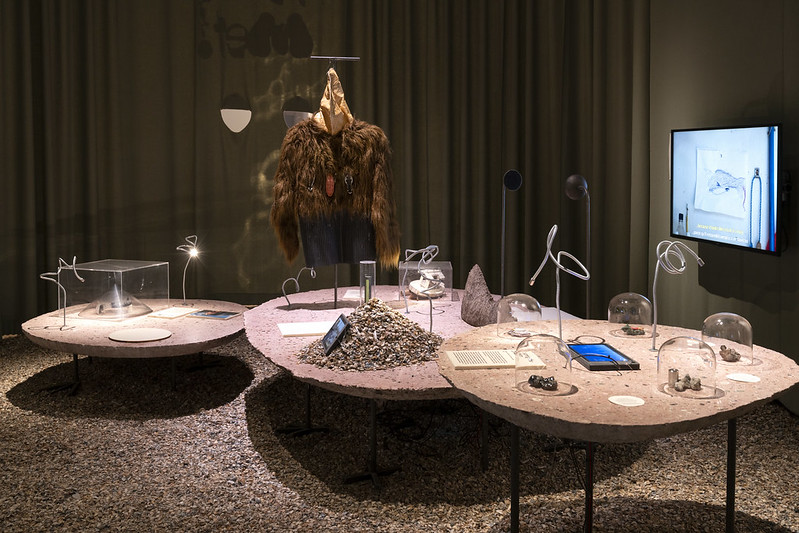
Drilling platform off the Dutch coast. Assessed by marine researcher Fiona Middleton. Have we met? Humans and Non-humans on Common Ground. 23rd Triennale Milano International Exhibition, La Triennale di Milano 2022. Photo: Cristiano Corte
Marine scientist Fiona Middleton has investigated the fate of pipelines, platforms and other offshore infrastructures in the North Sea. She identified a cluster of five small oil platforms located near the Dutch shore. One of them has already been decommissioned while the others are in some state of pre-decommissioning.
The Convention for the Protection of the Marine Environment of the North-East Atlantic (or OSPAR) states that rigs, including their contents and pipelines, must be entirely removed from the sea after decommissioning. However, several research by marine biologists have shown that offshore oil platforms have become oases of life, with fish, sponges, crustaceans, seabirds and other marine life using the base of the platforms either as a place to anchor to or as a place to visit and find food. Some scientists are even suggesting that the ageing oils rigs could be repurposed as ocean reefs.
In an interview with Wineke van Muiswinkel for Het Nieuwe Instituut, Middleton explains that before the arrival of offshore infrastructures, the North Sea wasn’t in great shape ecologically. Decades of trawling and anthropic marine activities had destroyed the oyster bed and other rocky structures that provide habitat for sea creatures.
Middleton‘s research challenges thus environmental campaigns that call for all oil rig structures to be entirely removed at the end of their economic lives. By leaving the rig structures in the sea we would shift from human values to non-human values without having to invest any money nor effort.
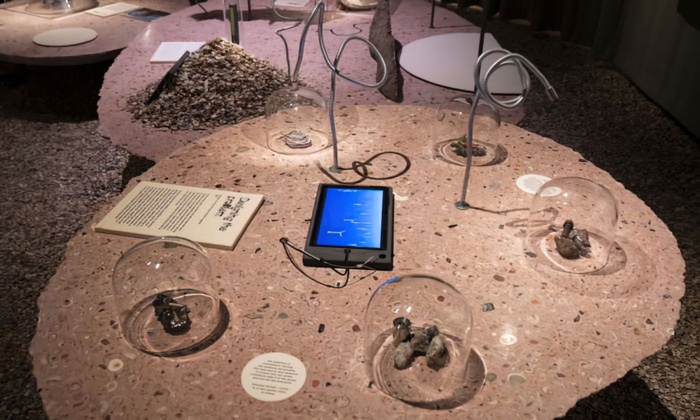
Embassy of the North Sea, Designing the Problem, 2022. Have we met? Humans and Non-humans on Common Ground. 23rd Triennale Milano International Exhibition, La Triennale di Milano 2022. Photo: Cristiano Corte
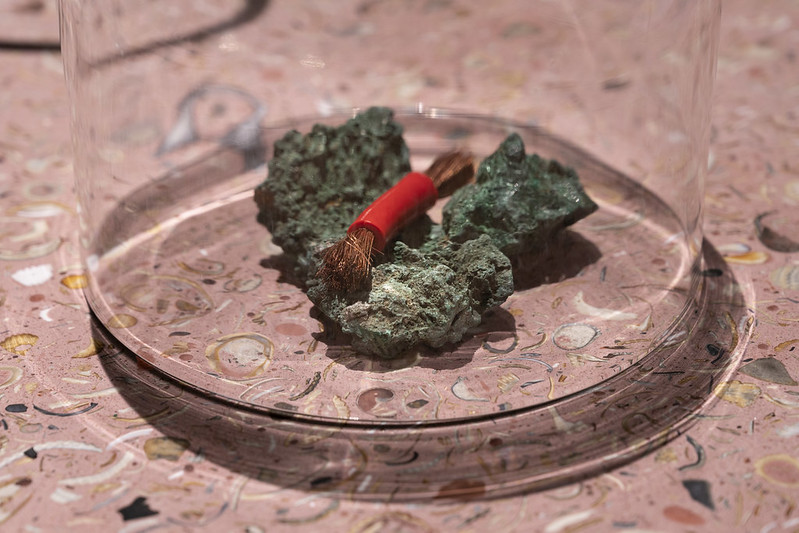
Embassy of the North Sea, Designing the Problem, 2022. Have we met? Humans and Non-humans on Common Ground. 23rd Triennale Milano International Exhibition, La Triennale di Milano 2022. Photo: Cristiano Corte
Designing the Problem, a project by Darko Lagunas, is also looking at energy exploitation in the North Sea and in particular the aftermath of offshore oil and gas energy. Lagunas is part of the Embassy of the North Sea: a group of artists, researchers, lawyers and activists that want the North Sea to become a real actor by listening to the political voices of things, plants, animals, microbes and people in and around the North Sea.
The research shown in the Dutch Pavilion invites us to consider what happens in the North Sea and other parts of the world when we build wind turbines in the sea. The wind turbines will reduce CO2 emissions but at what -or whose- cost? Are we going to, once again, disturb and endanger the marine life that we do not see?
The Embassy of the North Sea also probes into the environmental and humanitarian cost of the so-called green energy transition, in particular the mining -at the other side of the world- of the minerals necessary for the production of wind turbines. Outsourcing pollution and extractivism to distant countries is never going to be a “sustainable” solution. What we need, the project suggests, is to challenge the current economic system based on unlimited growth. We also need funding to help marine life thrive, a legal Zoöp representative acting on behalf of non-human interests and measures that ensure the fair treatment of workers and the environment in regions where raw materials are mined.
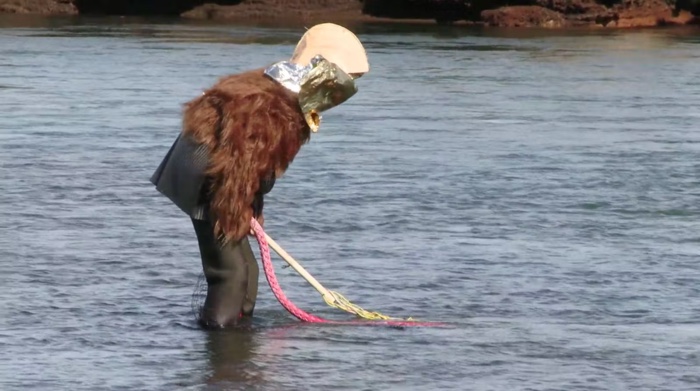
Brynjar Sigurðarson of Studio Brynjar and Veronika, Borgþór Sveinsson (still from the documentary), 2012
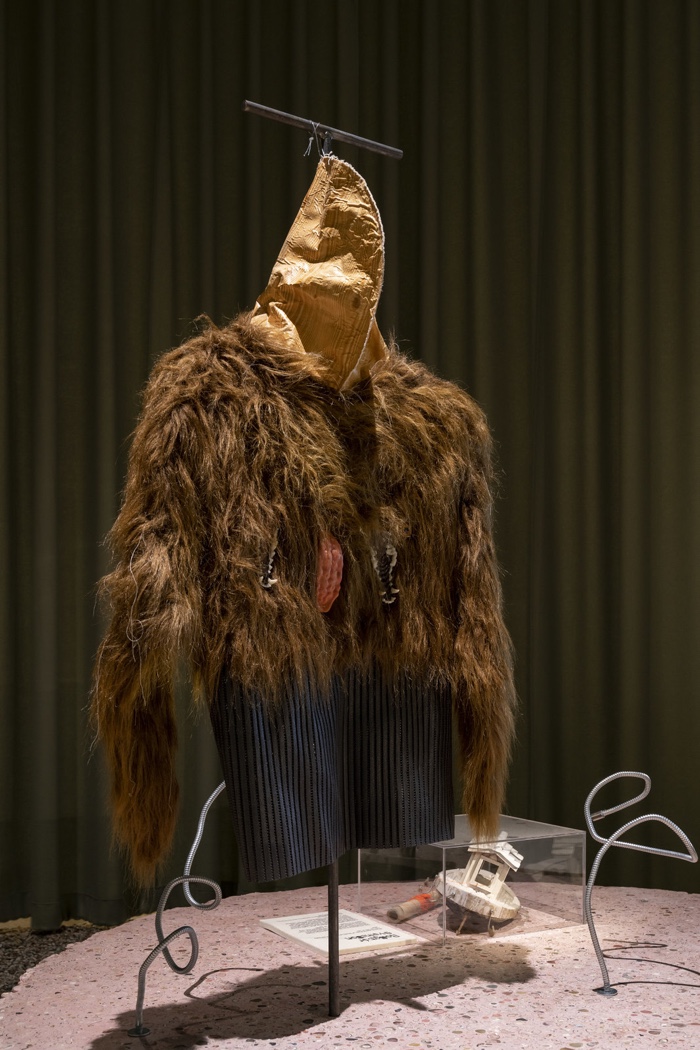
Brynjar Sigurðarson of Studio Brynjar and Veronika, Borgþór Sveinsson (still from the documentary), 2012. Have we met? Humans and Non-humans on Common Ground at La Triennale di Milano 2022. Photo: Cristiano Corte
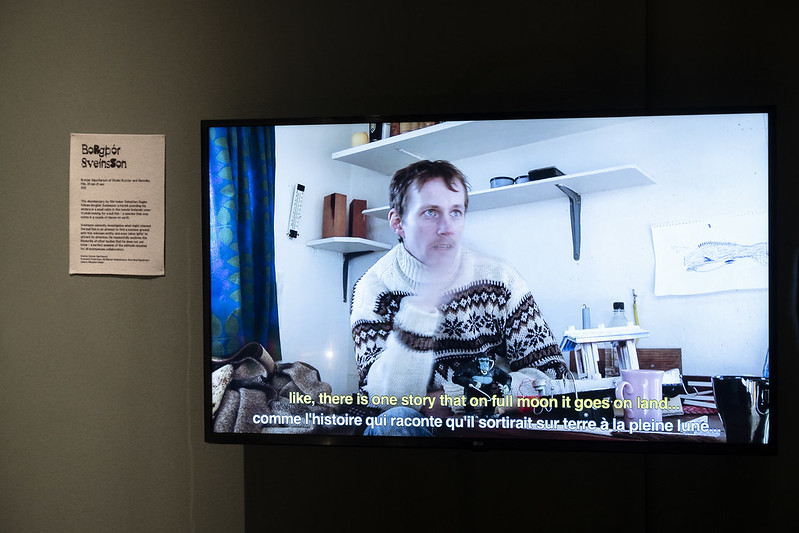
Brynjar Sigurðarson of Studio Brynjar and Veronika, Borgþór Sveinsson (still from the documentary), 2012. Have we met? Humans and Non-humans on Common Ground at La Triennale di Milano 2022. Photo: Cristiano Corte
Borgþór, a documentary by Brynjar Sigurðarson and Sebastian Ziegler, follows a hermit who spends the winter in a cabin in the remote countryside of Iceland. Named Borgþór Sveinsson, the man is looking for bullfish, a rare species that only exists in a few places in the world. He patiently investigates what might interest the fish in an attempt to find a common ground.
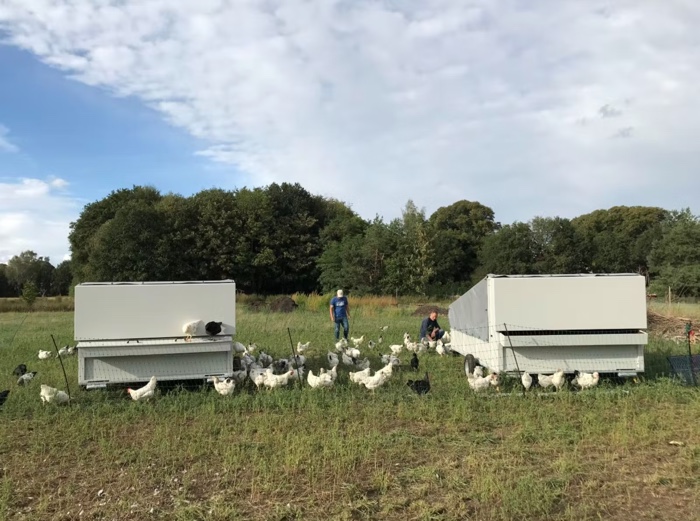
Harald den Breejen and Sjoerd van Leeuwen, commissioned by regenerative farm Bodemzicht, Chicken Mobile, 2020-ongoing
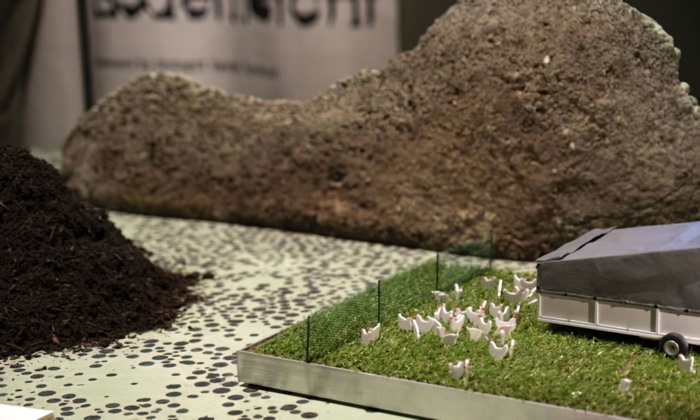
Harald den Breejen and Sjoerd van Leeuwen, commissioned by regenerative farm Bodemzicht, Chicken Mobile, 2020-ongoing. Have we met? Humans and Non-humans on Common Ground at La Triennale di Milano 2022. Photo: Cristiano Corte
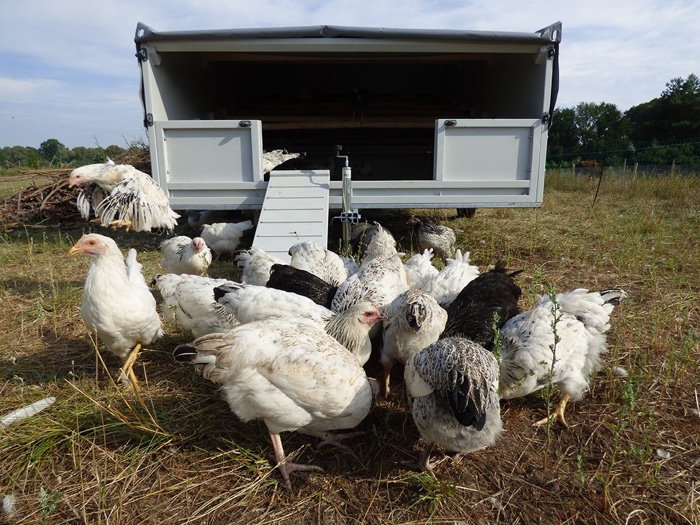
Mobile chicken coops. Photo: Bodemzicht
Chicken Mobile, designed by Harald den Breejen and Sjoerd van Leeuwen for regenerative farm Bodemzicht enables the regeneration of degraded soil. Chickens graze on fresh grass and insects in the open air all year round. They are moved from one area of ground to another in mobile chicken coops. Their grazing stimulates abundant grass growth, builds living soil and accelerates carbon storage.
In my view, Chicken Mobile is less a radical way to “advance equality in multispecies cohabitation” than yet another smart way to put animals at the service of human interests. The project does however present an improvement on the treatments that farming systems (particularly intensive ones) inflict on the vast majority of chickens and other sentient beings. Chicken Mobile also reflects the greater concern (compared to most Western countries) that Dutch people seem to have towards animals and the environment in general. The Netherlands Government, for example, has recently announced plans to halve the country’s nitrogen output by 2030 by using less fertiliser and cutting livestock numbers by 30 percent. I wish Belgium, France and Italy (the European countries I’m most familiar with) stopped looking at the impact of the meat industry on the environment as the ultimate taboo that shouldn’t be mentioned for fear of upsetting the electorate.
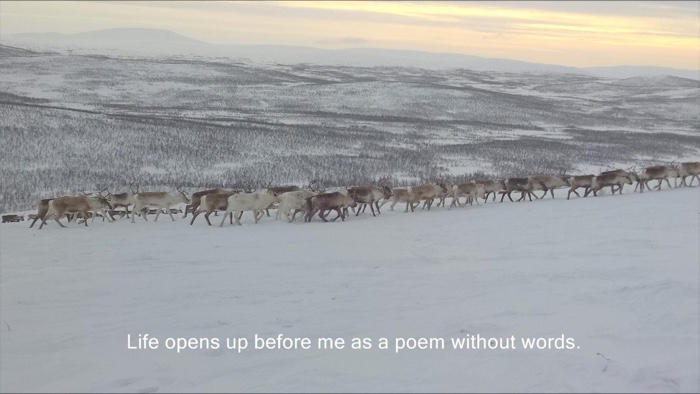
Leena Valkeapää and Oula A Valkeapää, Manifestations, 2017
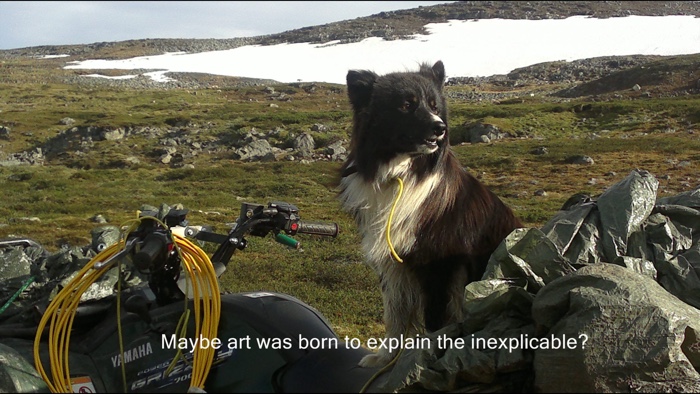
Leena Valkeapää and Oula A Valkeapää, Manifestations, 2017
A compilation of text messages and emails between Sami reindeer herder Oula A. Valkeapää and his partner environmental artist Leena Valkeapää, the video Manifestations gives an intimate view into the Arctic landscape, where the fates of humans and the reindeer are deeply entangled. Everyday exchanges convey glimpses of modes of knowledge in a world that is changing due to the pressures of the modern economy and the climate crisis. They also communicate an air of questioning where the questions become a part of life, without the need to find clear answers.
More images from the Dutch Pavilion at the Triennale:
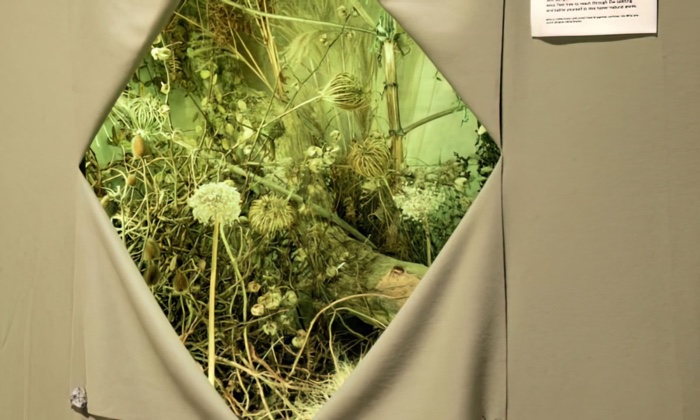
Joost Emmerik, Botanical Bath, 2022. Have we met? Humans and Non-humans on Common Ground at La Triennale di Milano 2022. Photo: Cristiano Corte
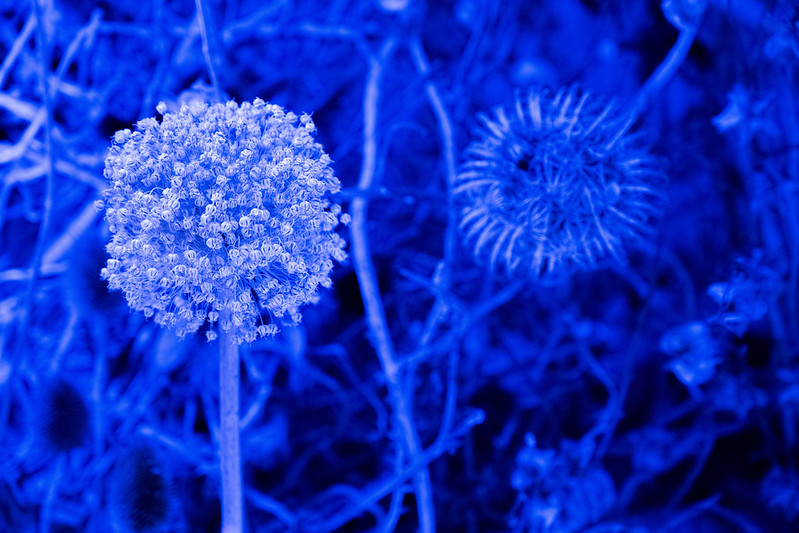
Joost Emmerik, Botanical Bath, 2022. Have we met? Humans and Non-humans on Common Ground at La Triennale di Milano 2022. Photo: Cristiano Corte
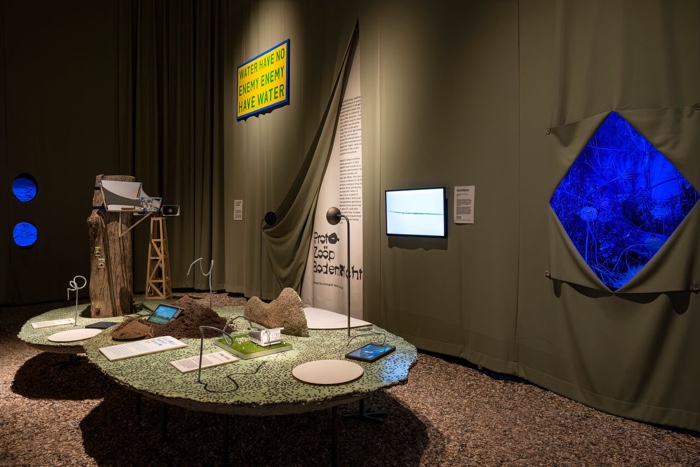
Have we met? Humans and Non-humans on Common Ground. 23rd Triennale Milano International Exhibition, La Triennale di Milano 2022. Photo: Cristiano Corte
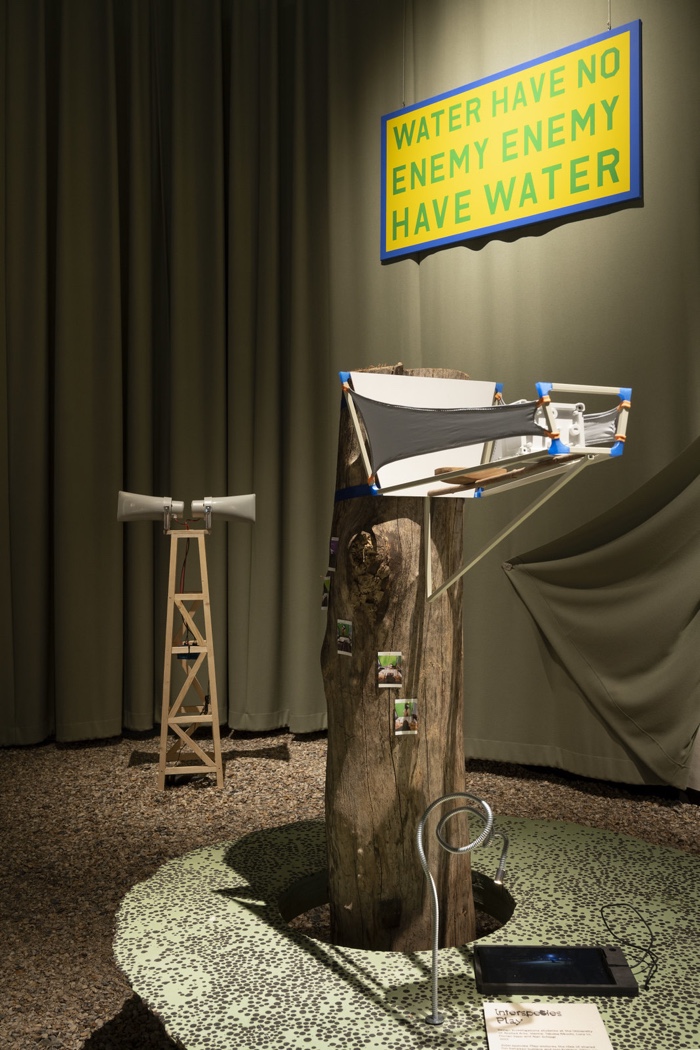
Julian Abraham “Togar”, Water have no enemy, enemy have water, 2022. Have we met? Humans and Non-humans on Common Ground at La Triennale di Milano 2022. Photo: Cristiano Corte
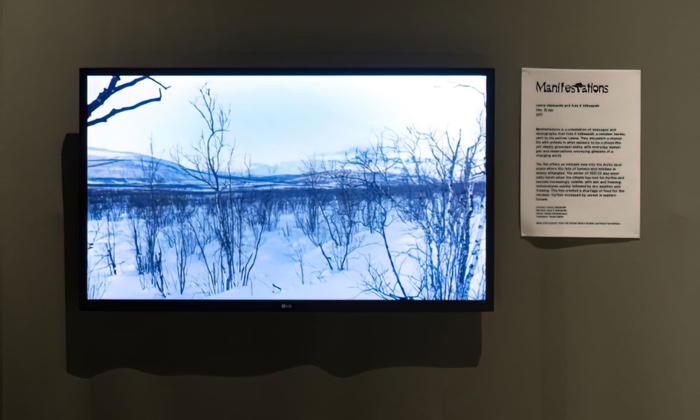
Have we met? Humans and Non-humans on Common Ground. 23rd Triennale Milano International Exhibition, La Triennale di Milano 2022. Photo: Cristiano Corte
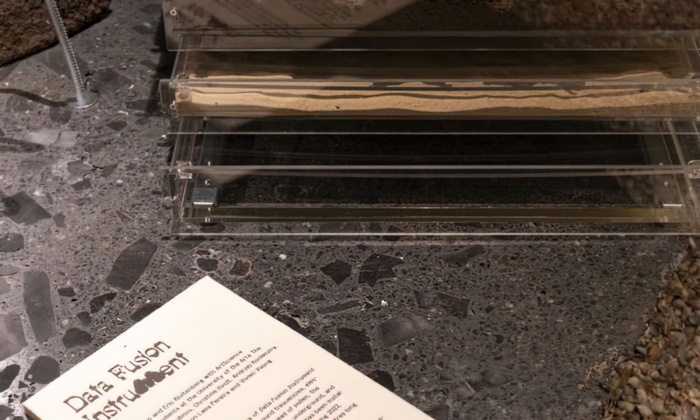
Have we met? Humans and Non-humans on Common Ground. 23rd Triennale Milano International Exhibition, La Triennale di Milano 2022. Photo: Cristiano Corte
The Netherlands pavilion Have we met? Humans and non-humans on common ground was curated by Klaas Kuitenbrouwer and Ellen Zoete. The show is part of Unknown Unknowns: An Introduction to Mysteries, the 23rd Triennale Milano International Exhibition, open until 12 December 2022 at Triennale in Milan.
